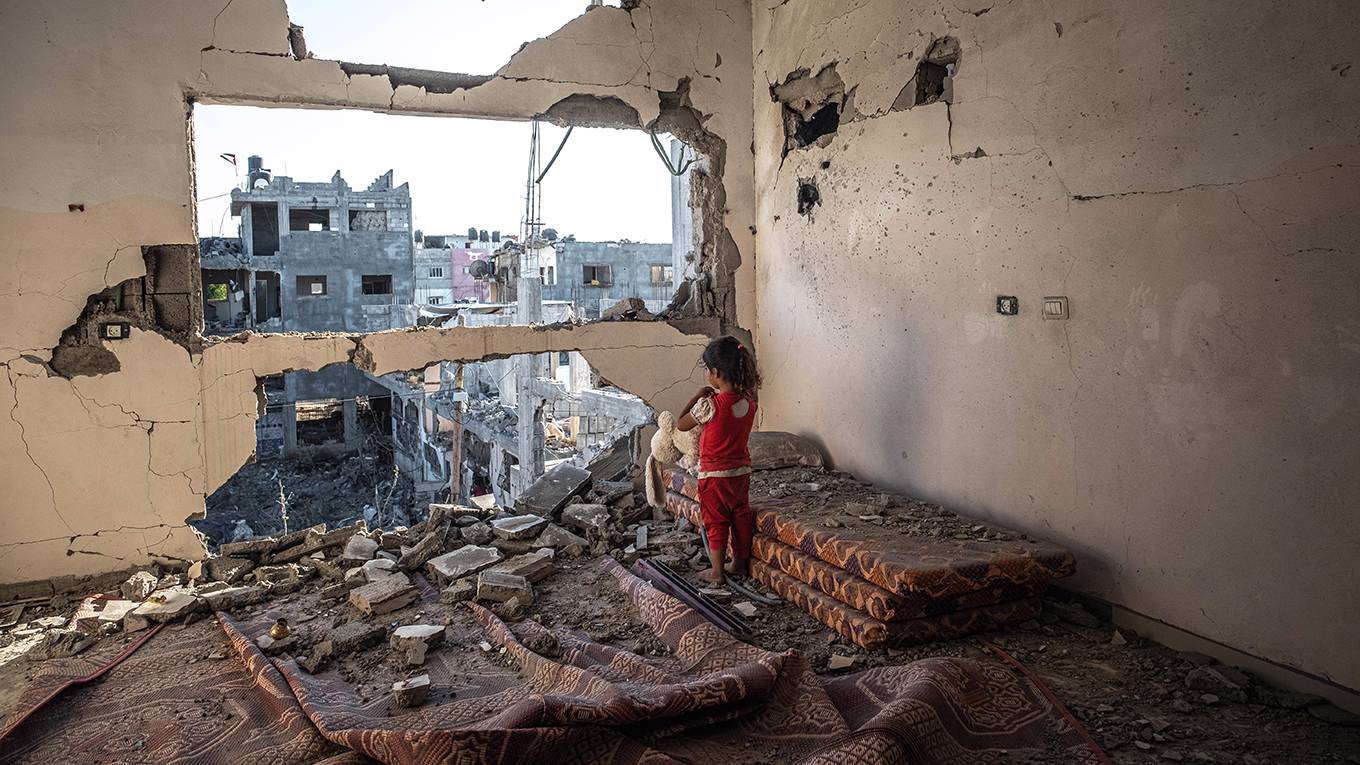SHLOMO BEN-AMI

TEL AVIV – The Gaza Strip is among the most densely populated and impoverished parts of the Middle East. It is also one of the most beleaguered places on Earth, ruled by the Islamist Hamas, crushed by an Israeli (and Egyptian) blockade, and exhausted by clashes with Israel. So far, fighting between Gaza Strip militants and Israel has done nothing to deliver progress toward a political settlement that might release Gaza’s residents from what is effectively an open-air prison.
But there is some reason to hope that the latest flareup of violence – now halted by a fragile ceasefire – will be different. Israel’s recent military campaign, Operation Breaking Dawn, targeted the Palestinian Islamic Jihad, Gaza’s second-largest militant group. And for only the second time – the first being during Israel’s Operation Black Belt in 2019 – Hamas did not join the fight. Instead, it merely condemned “Zionist aggression” against Palestinians – 44 of whom were killed, including 15 children and four women, some by Islamic Jihad’s own misfired rockets – and mourned the conflict’s “righteous (Palestinian) martyrs.”
This does not mean that Hamas has turned its back on armed struggle. But it does suggest that Hamas is seeking to strike a balance between its ethos of resistance and its responsibility to Gaza’s destitute population. It seems to be betting that, through indirect negotiations, it can achieve a more durable truce with Israel that could enable Gaza to achieve stability and economic rehabilitation.
Israel is certainly pleased with Hamas’s decision not to join in the latest round of violence, having long pursued a strategy aimed at fragmenting the Palestinian national movement by exploiting intractable divisions among Palestinians. “Palestine has vanished, and its blood has been divided between the different tribes/factions,” Ghazi Hamad, a former deputy foreign minister of the Hamas government, wrote in 2015.
The divisions include not only the well-known split between Hamas and the more secular Palestine Liberation Organization, but also – as the recent flareup has shown – rifts within the Islamist resistance. Whereas Hamas has often shown a pragmatic side, Islamic Jihad remains a reckless movement lacking any political vision.
Whereas Hamas has softened its commitment to the destruction of Israel, including with the release of a new charter in 2017, Islamic Jihad rejects any compromise with Israel. Moreover, it refuses to contest elections, and has no ambition to form a government in Gaza or the West Bank.
Instead – as Hamas is well aware – Islamic Jihad has become a proxy of Iran, which views Palestine as nothing more than a pawn in its broader regional calculations. Islamic Jihad’s attempts to drag Israel and Hamas into a war of attrition, together with the Shia Hezbollah’s provocations over Israel’s offshore gas sites, are Iran’s way of testing the standing of Israel’s new prime minister, Yair Lapid.
In fact, while the death toll in Gaza was rising, Islamic Jihad leader Ziyad al-Nakhalah was in Tehran meeting with Iranian President Ebrahim Raisi and Foreign Minister Hossein Amir-Abdollahian. During their meeting, Amir-Abdollahian highlighted the role of the Palestinian resistance in Iran’s broader struggle against Israel and the United States.
The split between Hamas and Islamic Jihad reflects the vast differences in their responsibilities. After the 2006 election brought Hamas to power in Gaza, the group began to back away from its commitment to violent resistance as the sole tool for Palestinian liberation. An Islamist movement with broad popular support and governmental obligations is simply not the same as an underground jihadist organization.
Perhaps chief among Hamas’s responsibilities today is tackling the unbearable living conditions in Gaza, from lack of water and poor sewage treatment to prolonged daily blackouts. Youth unemployment in the Gaza Strip exceeds 62%, and, according to Save the Children, four out of five children there suffer from depression.
After the brutal 11-day conflict between Israel and both Hamas and Islamic Jihad in May 2021, popular protest gained momentum in Gaza. In a live online event in January of this year, Palestinians criticized Hamas’s governance. “Imagine your one-month-old son dies because of the cold,” one participant complained. “Imagine your son dying because there is no electricity, no money, no wages, and no home.” With Gaza beset by a humanitarian tragedy, and armed resistance having utterly failed to end Israel’s occupation of Palestinian lands, what else can Hamas do other than negotiate with Israel?
Israel’s government, for its part, is deliberately cultivating Hamas as a partner for a longer-term truce. In exchange for Hamas’s cooperation, it is prepared to relax the blockade, allocate thousands of permits for Palestinians to work in Israel, and invest in infrastructure, such as a seaport, in Gaza.
In fact, Israel may be prepared to treat Gaza – as a territory with defined borders, a recognized sovereign that caters to its population’s needs, military capabilities, and an independent foreign policy – virtually as an independent state. But, of course, Israel’s intentions are far from pure. Improving relations with Hamas is actually a convenient means of burying the two-state solution and driving an even larger wedge between an “independent” Gaza and the occupied West Bank, where Israel would persist in its policy of expanding Jewish settlements.
How receptive Hamas is to Israel’s proposition remains to be seen. After all, Hamas has not exactly undergone a Damascene conversion. Rather, it is locked in a tormented effort to balance its revolutionary ethos and its commitment to the broader Palestinian cause with Gaza’s material reality. The creation of a kind of Palestinian Hong Kong in Gaza, while the West Bank remains subjugated, could well fuel new challenges to Hamas’s legitimacy, causing more problems than it solves.
No comments:
Post a Comment